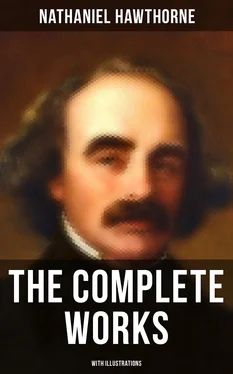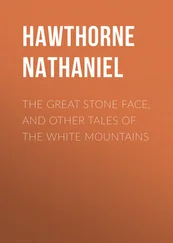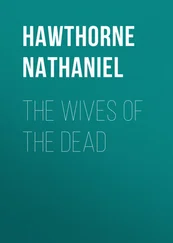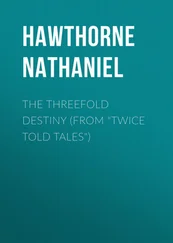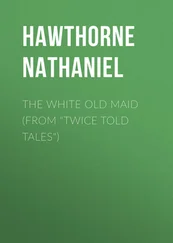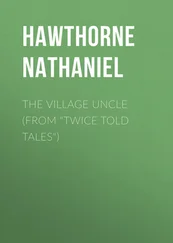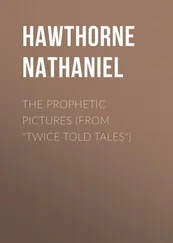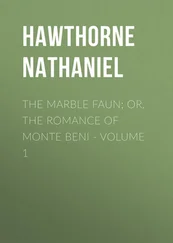The party now strayed onward from hall to hall of that rich gallery, pausing here and there, to look at the multitude of noble and lovely shapes, which have been dug up out of the deep grave in which old Rome lies buried. And still, the realization of the antique Faun, in the person of Donatello, gave a more vivid character to all these marble ghosts. Why should not each statue grow warm with life! Antinous might lift his brow, and tell us why he is forever sad. The Lycian Apollo might strike his lyre; and, at the first vibration, that other Faun in red marble, who keeps up a motionless dance, should frisk gayly forth, leading yonder Satyrs, with shaggy goat-shanks, to clatter their little hoofs upon the floor, and all join hands with Donatello! Bacchus, too, a rosy flush diffusing itself over his time-stained surface, could come down from his pedestal, and offer a cluster of purple grapes to Donatello’s lips; because the god recognizes him as the woodland elf who so often shared his revels. And here, in this sarcophagus, the exquisitely carved figures might assume life, and chase one another round its verge with that wild merriment which is so strangely represented on those old burial coffers: though still with some subtile allusion to death, carefully veiled, but forever peeping forth amid emblems of mirth and riot.
As the four friends descended the stairs, however, their play of fancy subsided into a much more sombre mood; a result apt to follow upon such exhilaration as that which had so recently taken possession of them.
“Do you know,” said Miriam confidentially to Hilda, “I doubt the reality of this likeness of Donatello to the Faun, which we have been talking so much about? To say the truth, it never struck me so forcibly as it did Kenyon and yourself, though I gave in to whatever you were pleased to fancy, for the sake of a moment’s mirth and wonder.” “I was certainly in earnest, and you seemed equally so,” replied Hilda, glancing back at Donatello, as if to reassure herself of the resemblance. “But faces change so much, from hour to hour, that the same set of features has often no keeping with itself; to an eye, at least, which looks at expression more than outline. How sad and sombre he has grown all of a sudden!” “Angry too, methinks! nay, it is anger much more than sadness,” said Miriam. “I have seen Donatello in this mood once or twice before. If you consider him well, you will observe an odd mixture of the bulldog, or some other equally fierce brute, in our friend’s composition; a trait of savageness hardly to be expected in such a gentle creature as he usually is. Donatello is a very strange young man. I wish he would not haunt my footsteps so continually.”
“You have bewitched the poor lad,” said the sculptor, laughing. “You have a faculty of bewitching people, and it is providing you with a singular train of followers. I see another of them behind yonder pillar; and it is his presence that has aroused Donatello’s wrath.”
They had now emerged from the gateway of the palace; and partly concealed by one of the pillars of the portico stood a figure such as may often be encountered in the streets and piazzas of Rome, and nowhere else. He looked as if he might just have stepped out of a picture, and, in truth, was likely enough to find his way into a dozen pictures; being no other than one of those living models, dark, bushy bearded, wild of aspect and attire, whom artists convert into saints or assassins, according as their pictorial purposes demand.
“Miriam,” whispered Hilda, a little startled, “it is your model!”
CHAPTER III
SUBTERRANEAN REMINISCENCES
Table of Contents
Miriam’s model has so important a connection with our story, that it is essential to describe the singular mode of his first appearance, and how he subsequently became a self-appointed follower of the young female artist. In the first place, however, we must devote a page or two to certain peculiarities in the position of Miriam herself.
There was an ambiguity about this young lady, which, though it did not necessarily imply anything wrong, would have operated unfavorably as regarded her reception in society, anywhere but in Rome. The truth was, that nobody knew anything about Miriam, either for good or evil. She had made her appearance without introduction, had taken a studio, put her card upon the door, and showed very considerable talent as a painter in oils. Her fellow professors of the brush, it is true, showered abundant criticisms upon her pictures, allowing them to be well enough for the idle half-efforts of an amateur, but lacking both the trained skill and the practice that distinguish the works of a true artist.
Nevertheless, be their faults what they might, Miriam’s pictures met with good acceptance among the patrons of modern art. Whatever technical merit they lacked, its absence was more than supplied by a warmth and passionateness, which she had the faculty of putting into her productions, and which all the world could feel. Her nature had a great deal of color, and, in accordance with it, so likewise had her pictures.
Miriam had great apparent freedom of intercourse; her manners were so far from evincing shyness, that it seemed easy to become acquainted with her, and not difficult to develop a casual acquaintance into intimacy. Such, at least, was the impression which she made, upon brief contact, but not such the ultimate conclusion of those who really sought to know her. So airy, free, and affable was Miriam’s deportment towards all who came within her sphere, that possibly they might never be conscious of the fact, but so it was, that they did not get on, and were seldom any further advanced into her good graces to-day than yesterday. By some subtile quality, she kept people at a distance, without so much as letting them know that they were excluded from her inner circle. She resembled one of those images of light, which conjurers evoke and cause to shine before us, in apparent tangibility, only an arm’s length beyond our grasp: we make a step in advance, expecting to seize the illusion, but find it still precisely so far out of our reach. Finally, society began to recognize the impossibility of getting nearer to Miriam, and gruffly acquiesced.
There were two persons, however, whom she appeared to acknowledge as friends in the closer and truer sense of the word; and both of these more favored individuals did credit to Miriam’s selection. One was a young American sculptor, of high promise and rapidly increasing celebrity; the other, a girl of the same country, a painter like Miriam herself, but in a widely different sphere of art. Her heart flowed out towards these two; she requited herself by their society and friendship (and especially by Hilda’s) for all the loneliness with which, as regarded the rest of the world, she chose to be surrounded. Her two friends were conscious of the strong, yearning grasp which Miriam laid upon them, and gave her their affection in full measure; Hilda, indeed, responding with the fervency of a girl’s first friendship, and Kenyon with a manly regard, in which there was nothing akin to what is distinctively called love.
A sort of intimacy subsequently grew up between these three friends and a fourth individual; it was a young Italian, who, casually visiting Rome, had been attracted by the beauty which Miriam possessed in a remarkable degree. He had sought her, followed her, and insisted, with simple perseverance, upon being admitted at least to her acquaintance; a boon which had been granted, when a more artful character, seeking it by a more subtle mode of pursuit, would probably have failed to obtain it. This young man, though anything but intellectually brilliant, had many agreeable characteristics which won him the kindly and half-contemptuous regard of Miriam and her two friends. It was he whom they called Donatello, and whose wonderful resemblance to the Faun of Praxiteles forms the keynote of our narrative.
Читать дальше
